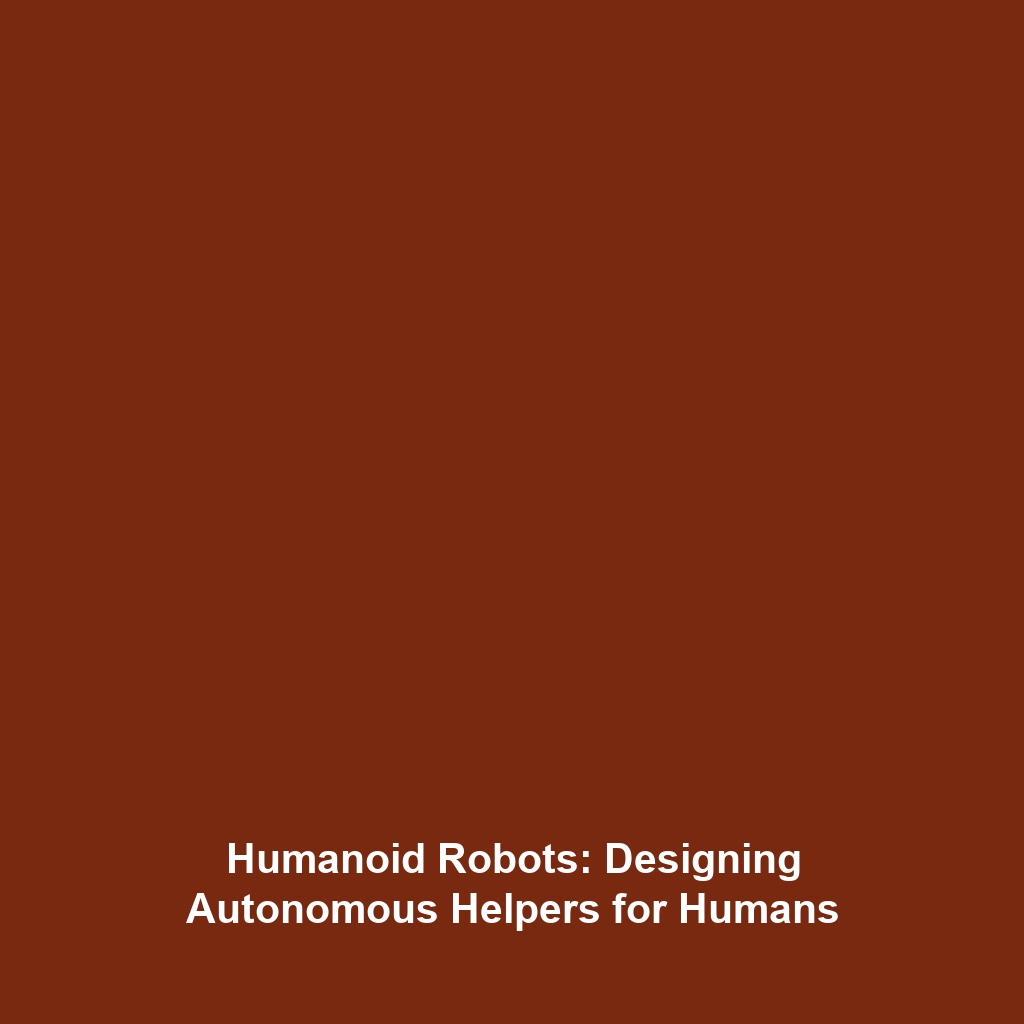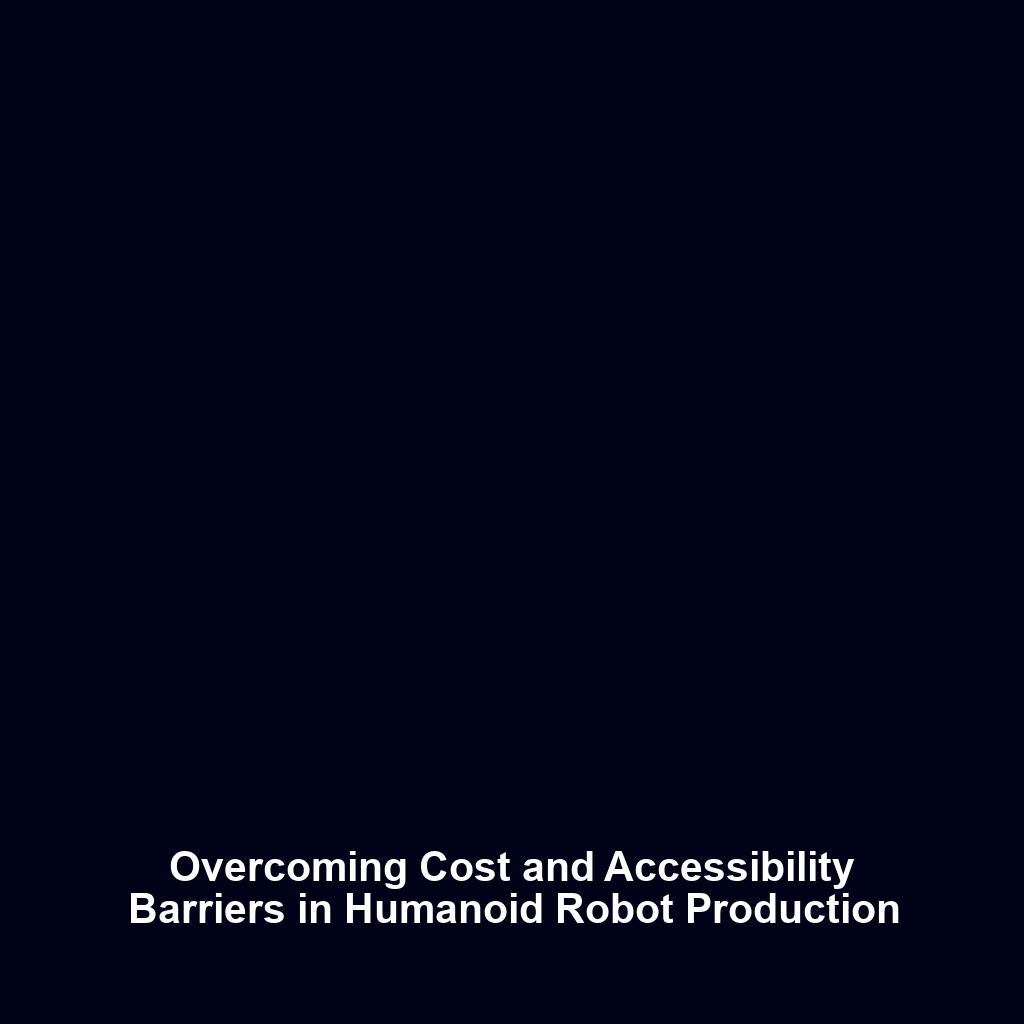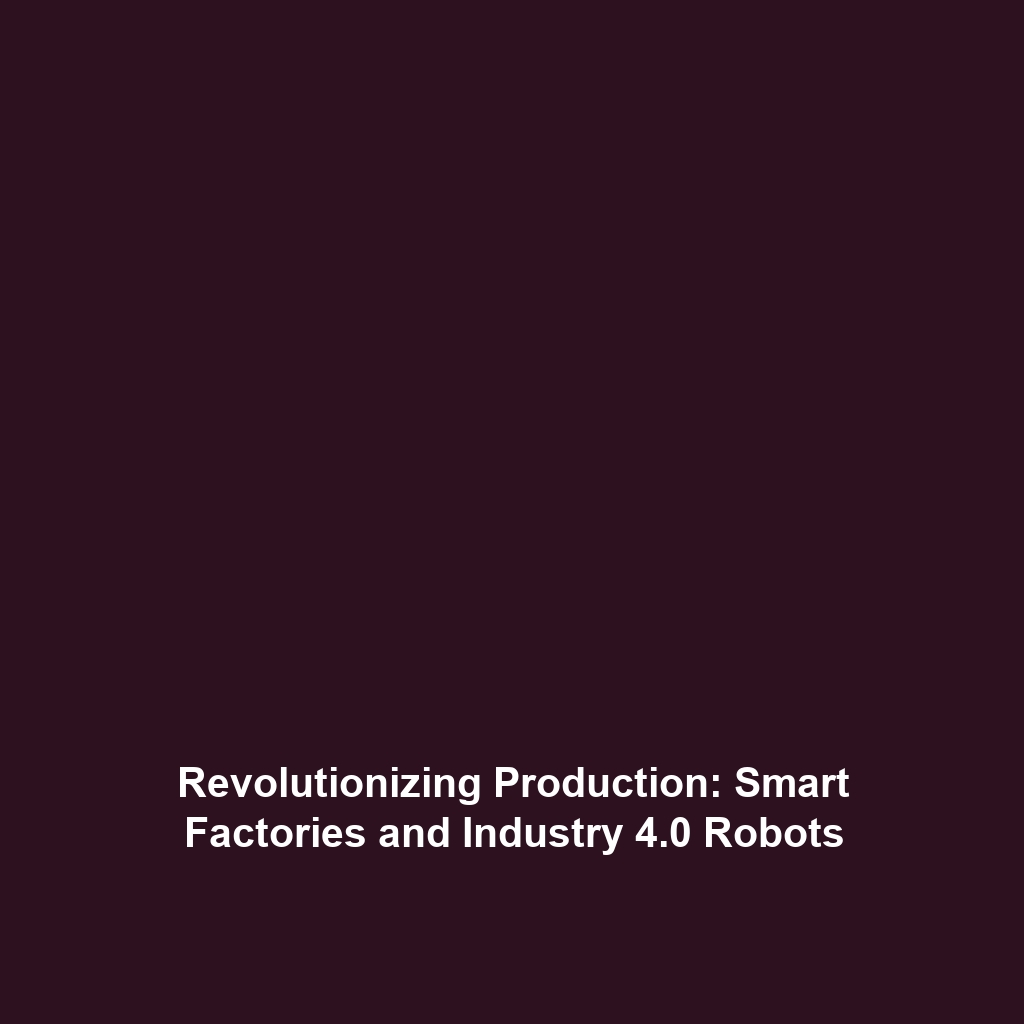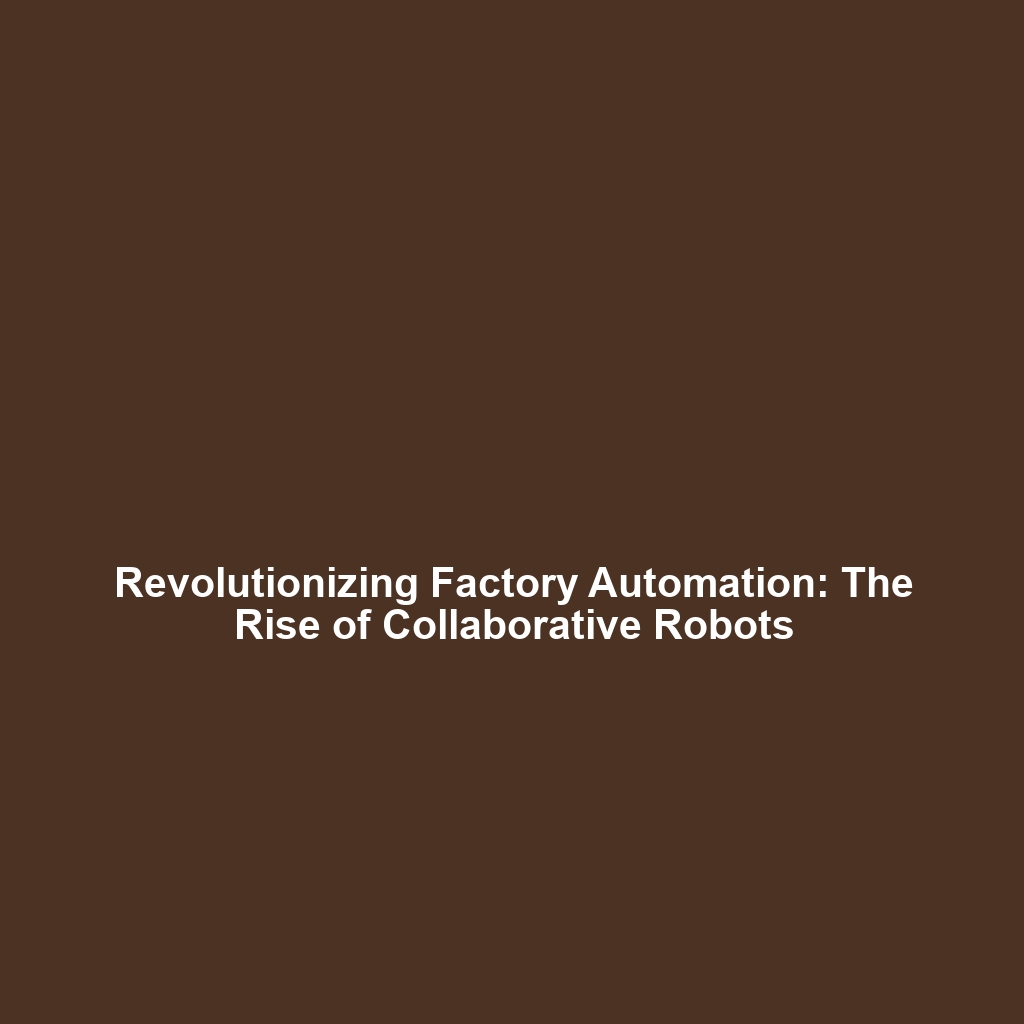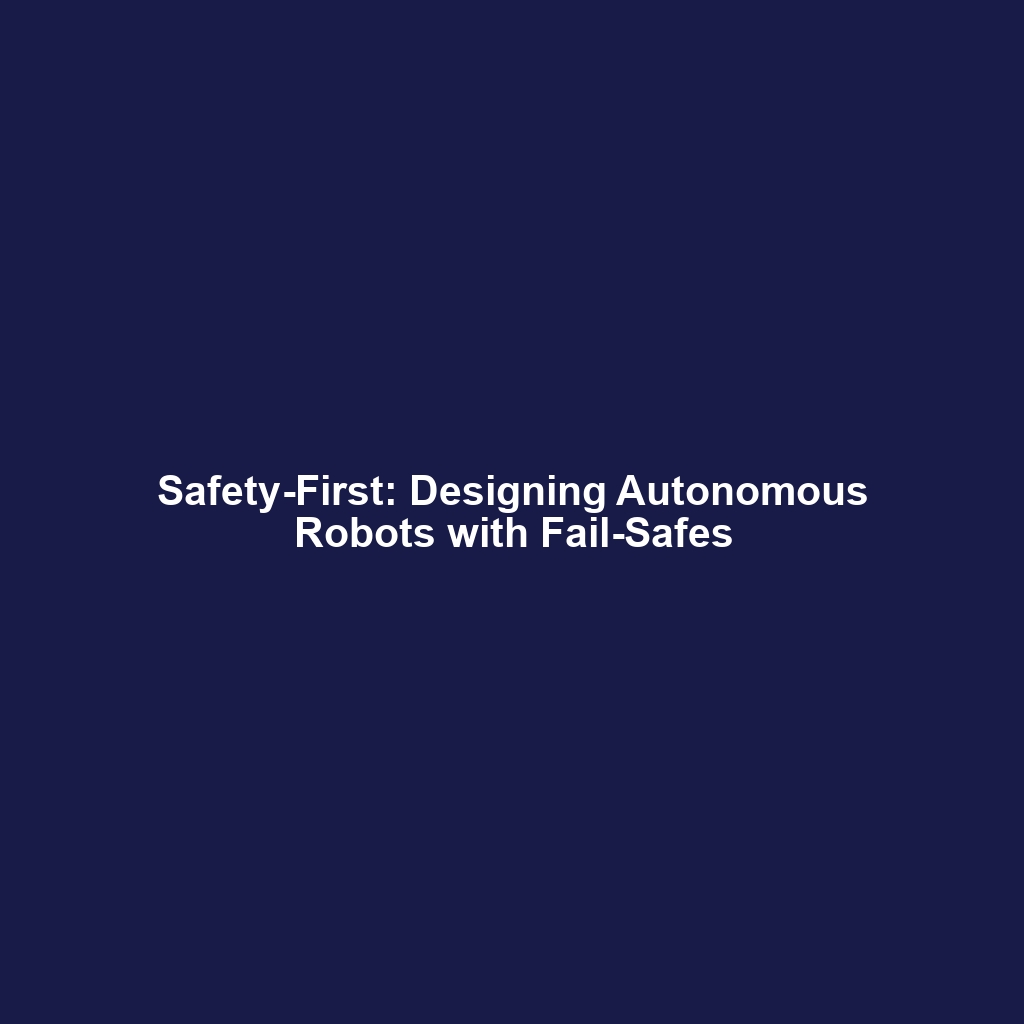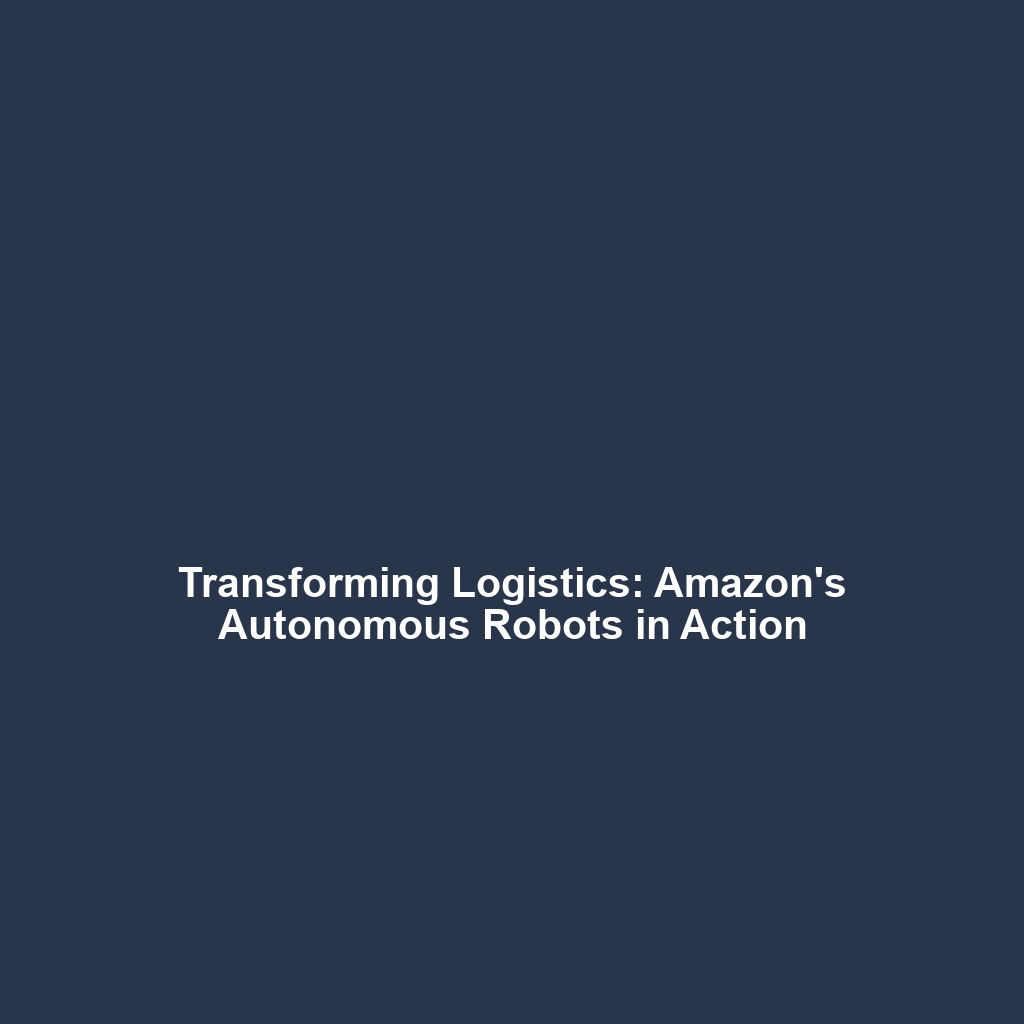How Humanoid Robots are Designed to Perform Tasks that Humans Do
Introduction
Humanoid robots represent a significant advancement in robotics, primarily designed to mimic human actions and perform tasks traditionally executed by people. Their ability to operate autonomously or engage with humans enhances their potential for a wide range of applications in various industries. This article delves into the design principles, applications, and future of humanoid robots, highlighting their relevance in the evolving landscape of technology.
Key Concepts
Design Principles of Humanoid Robots
Humanoid robots are engineered with features that allow them to interact effectively with human environments. Key concepts include:
- Mechanical Design: These robots feature joints and limbs that replicate human anatomy, allowing for complex movements.
- Sensors and Actuators: Advanced sensors enable humanoid robots to perceive their environment and adapt to changes, while actuators facilitate movement.
- AI and Machine Learning: Integrated AI systems allow humanoid robots to learn from interactions, improving their response to tasks over time.
Applications and Real-World Uses
Humanoid robots are transforming various sectors by performing tasks that humans do, either autonomously or collaboratively. Notable applications include:
- Healthcare: Humanoid robots assist in patient care, providing companionship or support during rehabilitation.
- Customer Service: Robots like SoftBank’s Pepper interact with customers in retail environments, enhancing service efficiency.
- Education: Educational robots facilitate learning in classrooms, engaging students through interactive methods.
These examples demonstrate how humanoid robots are utilized to increase productivity and efficiency across different industries.
Current Challenges
Despite the advancements, several challenges persist in the deployment and development of humanoid robots, including:
- Technological Limitations: Current robots often lack the fine motor skills and dexterity that humans possess.
- Safety Concerns: Ensuring safe collaboration between robots and humans remains a critical issue.
- Ethical Implications: The integration of robots in sensitive environments raises ethical questions regarding autonomy and privacy.
Future Research and Innovations
The future of humanoid robots is promising, with ongoing research focusing on:
- Advanced AI Algorithms: Machine learning advancements could lead to more autonomous functioning in unpredictable environments.
- Enhanced Robotics: Innovations in materials and design could yield more agile and versatile humanoid robots.
- Collaborative Systems: Research is also focused on improving interaction capabilities, making humanoid robots better teammates in various fields.
Conclusion
In summary, humanoid robots are rapidly evolving to perform tasks like humans, both autonomously and with human input. Understanding their design principles and applications will be crucial as we integrate these technologies into our daily lives. For further reading on robotics and technology trends, visit our related articles section.
